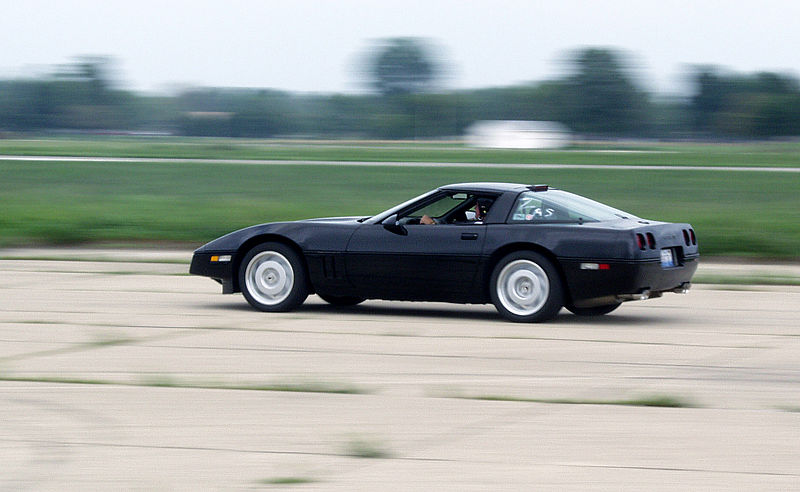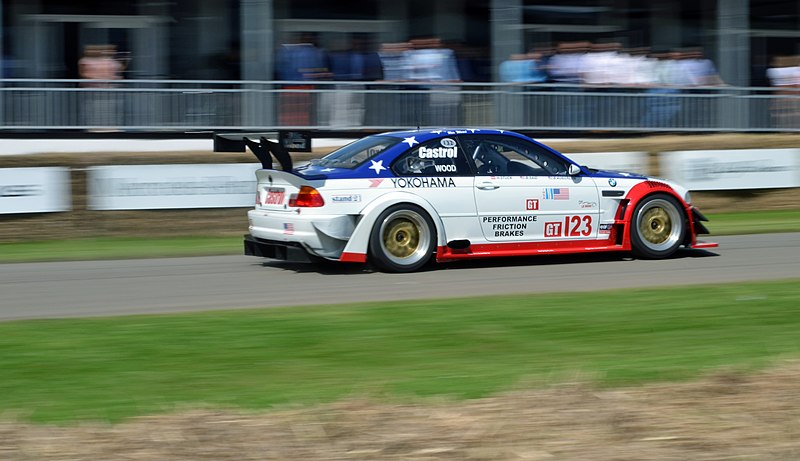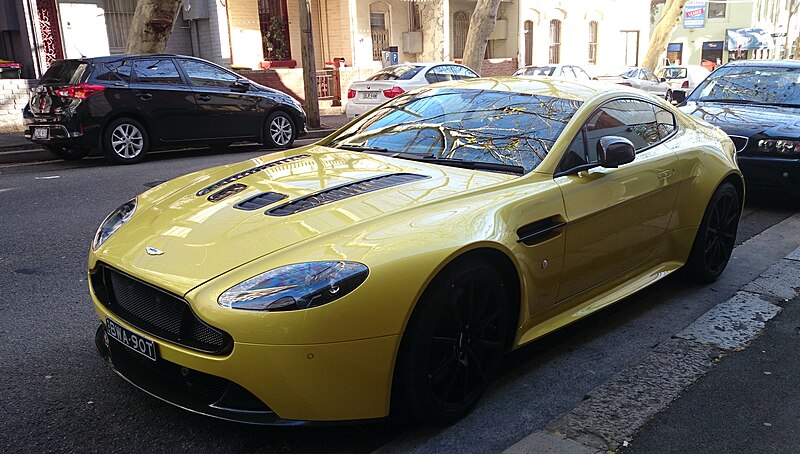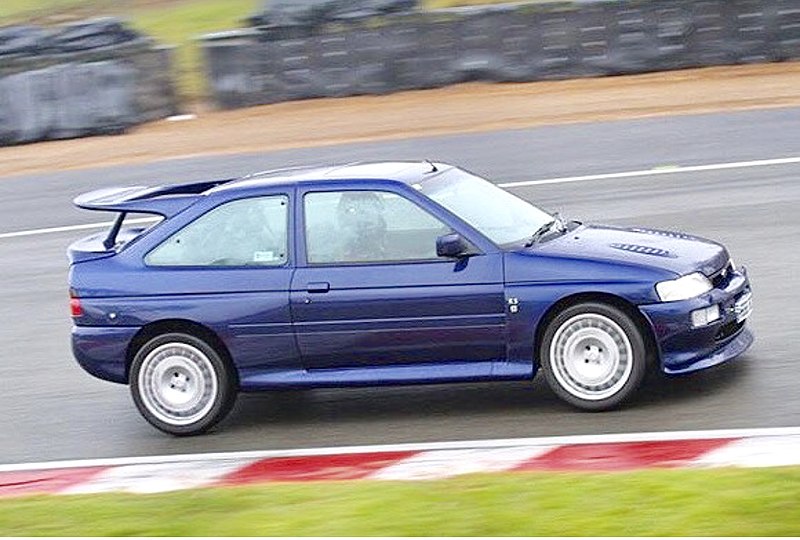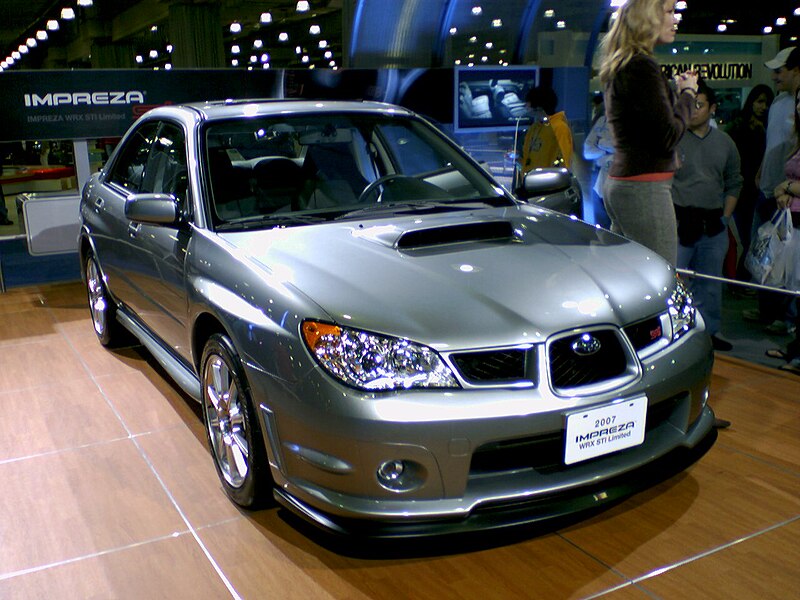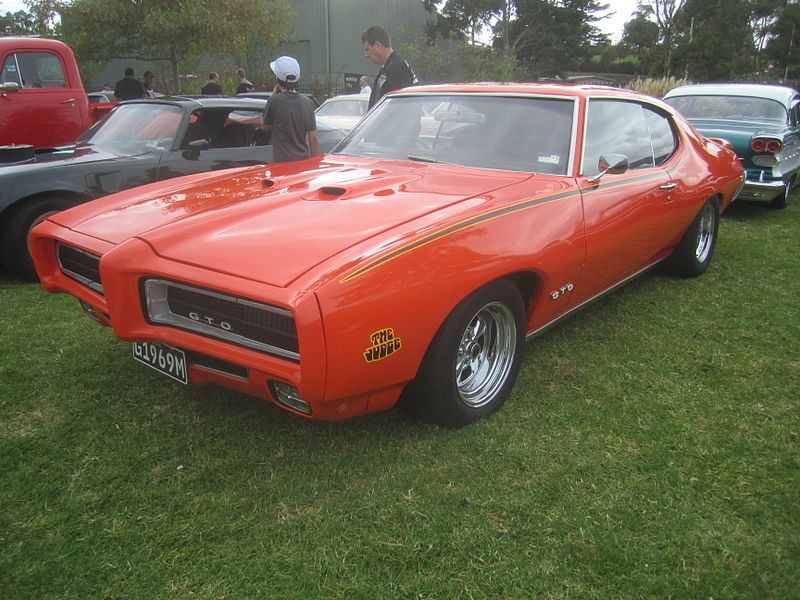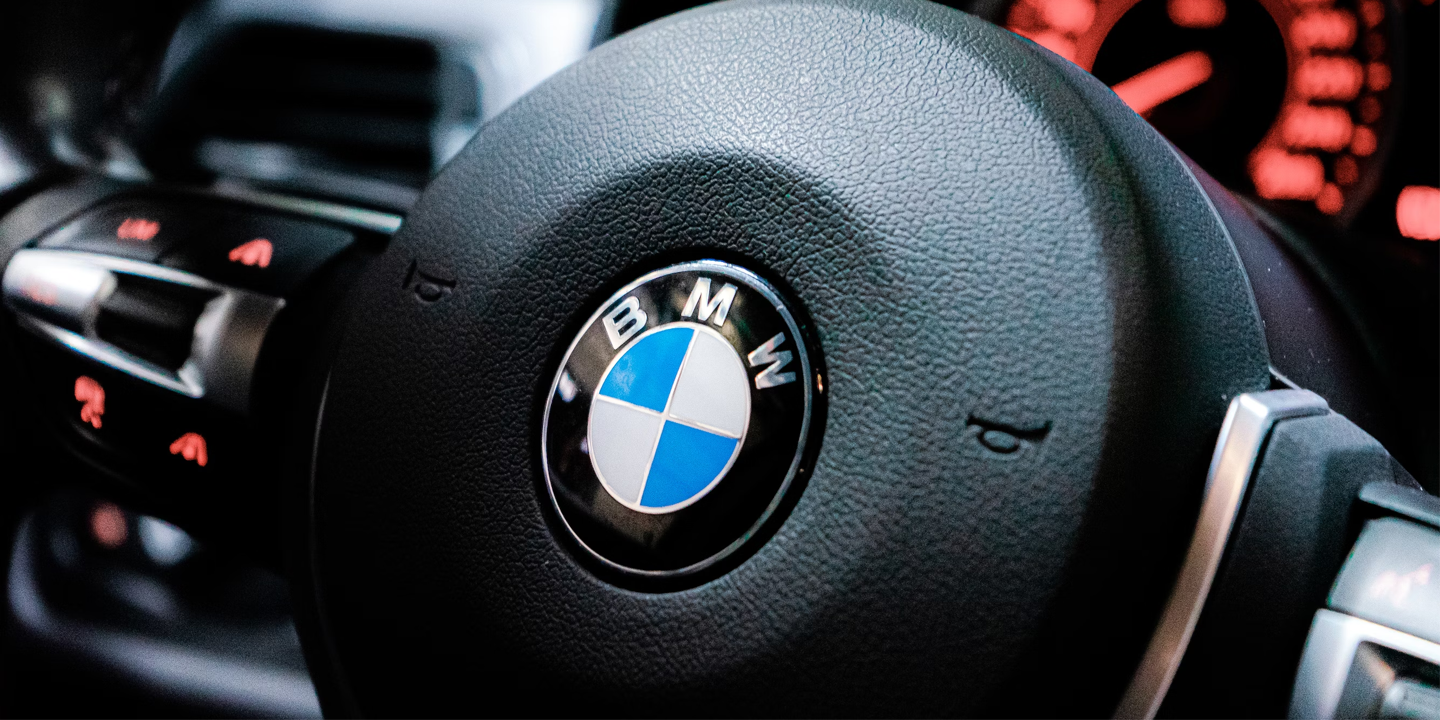It might seem weird for a company to declare a lower horsepower number than its vehicle is capable of, especially in the sports and muscle car categories. Surely you’d want to exaggerate your product’s power to boost the price and appeal? But actually, declaring a lower HP rating than your car is able to produce can make all other aspects of its performance look even more impressive – not to mention, letting drivers get a little off their insurance premiums, many of which are calculated by engine power. Here are our 30 favorite models that snuck a lot of extra power onto the road.
 Greg Gjerdingen via Wikicommons
Greg Gjerdingen via Wikicommons
30. Shelby GT350R
The Shelby shares a silhouette with the Mustang GT but that’s about it – almost every part of this model was designed fresh. The incredible Voodoo engine makes the biggest difference, delivering massive horsepower and torque that fires this bullet from 0 to 60 mph in 3.9 seconds. It might have been released as a muscle car but make no mistake, this baby is pure sport.
29. Dodge Dart 413 Max Wedge
The original Dart was a midsize family car with a solid engine and a list of practical features. It was an unpretentious, no-nonsense car – until they stripped the interior, shored up the suspension and added the astonishing 413 Max Wedge engine. Claiming to deliver only 420 HP, this beast was reportedly capable of 500 or more, turning this sedate cruiser into a drag racer for the ages.
28. Ford GT
The Ford GT shares a basic engine with the F-150, so you know it’s got to be a real heavy lifter. Even an incredible claim of 647 HP was, according to independent testers, a significant undersell. This is the 3.5 EcoBoost V6 and it is the star of this limited edition racer – only 250 vehicles are made every year.
26. Lancia Delta S4
The Delta S4 was one of the greatest rally cars of its time, but in order to keep it track-legal, Lancia was obligated to produce a street-legal version as well. Called the “Stradale” by those in the know, it maintained not only the shape and build of the original Delta hatchback but the racing suspension and capable all-wheel-drive as well. The company declared an HP output of 250 HP but reportedly this speedster in disguise delivered upwards of 300.
25. Chevrolet Corvette ZR1
Corvette kept this car secret for years of development under the code name “Blue Devil”. The task was to build the most powerful, most impressive vehicle to date while still staying within the boundaries of being street-legal. In 2009, the automotive world was blown away by the results, and the understandably major $100k price tag. The supercharged 6.2-liter LS9 engine delivered a reported 638 HP, but the actual number was more like 650.
24. 1969 Hurst Olds 442
Oldsmobile was stuck under GMs ban in the 60s that didn’t allow engines larger than 400 CID in cars in the intermediate category. However, a tricky collaboration with Hurst allowed them to skirt this restriction by shipping partially-constructed Oldsmobile 442s to Hurst’s factories. Hurst was not covered by this ban, being an independent contractor, and happily added the massively powerful 455 V8 to the hot-rod body. These cars were capable of a stunning 420 HP, though the companies claimed a slightly-less-mighty 390.
 IdealClassicCars via Wikicommons
IdealClassicCars via Wikicommons
23. BMW M3 GTR
To maintain an even playing field for racers, companies that send anything to the track are limited by what they offer as part of their purchasable product. In the early 2000s, BMW – wanting to install a 4.4L V8 in their M3 racer – had to develop a street-legal car on the market that offered this as well. Enter the M3 GTR, with supposedly 493 HP – in actuality, a mindblowing 600. BMW only build 10 of these cars and kept them within the company, even though car buffs everywhere would have loved to add one to a private collection.
22. Aston Martin V12 Vantage
The Vantage was a compact sports car introduced to compete with the Porsche 911. While it got more than enough power from its 4.3L V8 engine, the designers weren’t prepared to stop experimenting, and this model, boasting a remarkable V12 instead, was the results. Despite claiming a horsepower of only 510, this British muscle car could do more like 600.
21. 1967 Chevrolet Corvette L-88 Convertible
Corvette set the benchmark for the American muscle car for generations. The C2 model caused a real sensation when it was introduced, with disk brakes, independent rear suspension, and an eyewatering L-88 engine. This big block power model could produce close to 600HP, despite claiming a conservative-by-comparison 390.
 Michael Barera via Wikicommons
Michael Barera via Wikicommons
20. 1970 Buick Grand Sport 455
One of Buick’s few ventures outside of the luxury car market, the Grand Sport 455 was a true muscle car with unmistakable style and performance. It was named for its 455 V8 engine rated at 360 HP which could hit 60 mph in less than 7 seconds. Considering its day, the fact that the actual HP output was 450 HP is not that surprising.
19. 1970 Chevrolet Chevelle SS 454
The Chevelle was a powerful muscle car that, when equipped with the legendary 454 V8 engine, became a dominant force on the drag strip. An initial rating of 360 HP would skyrocket if the driver opted for an even more powerful version of this engine, the LS-6. In its best racing form it could produce around 500HP, though it declared a max of only 450.
 Michael Barera via Wikicommons
Michael Barera via Wikicommons
18. 1965 Pontiac Catalina 2+2
Pontiac is arguably best known for the GTO, definitely the muscle car of the mid-60s. However, its lesser known muscle car model, the Catalina 2+2, was a demon on the racetrack, complete with an engine that might as well breathe fire. A Tri-power intake system made it stand out of the crowd and its declared HP number of 376 could, in reality, pass 400 without a second glance.
 Greg Gjerdingen via Wikicommons
Greg Gjerdingen via Wikicommons
17. Ford 7-Litre
The Mustang and Thunderbird tend to overshadow this classic muscle car. However, it was a rare and impressive experiment for the company in the 60s. Ford was hoping to compete with the Impala SS model and added a 7-liter engine into a mix that also included the chassis from a full-size Galaxie and could do 390HP (versus the claimed 345 HP). The engine would continue to be offered as an option on the Galaxie, and the 7-Litre went out of production after one year.
16. Ford Escort RS Cosworth
The Escort isn’t necessarily a car always associated with turbocharged performance – it feels more like a sedate, affordable sedan. However, in the 90s, the RS Cosworth model pulled parts from the Sierra RS Cosworth and improved the engine, putting it on level with sports cars of its day. The 250 HP, a big higher than the 227 HP on the paperwork, made it a rally contender to be reckoned with.
15. Chevrolet Corvette L88
It’s not an accident that there are multiple Corvettes on this list. Carrying on the success of the C2 L-88 model, this third-generation Corvette was almost a secret recipe for a street racer. Only a few were made, partly to keep it away from amateur racers, in whose hands the monster 700 HP engine (not the claimed 425) could be a legitimate danger.
14. Japanese Sports Cars
Car companies in Japan had a kind of unspoken agreement about their sports cars in the 90s – for the sake of the environment, insurance and safety, their domestic cars could not be rated at higher than 280 HP. But at this point in this list, it shouldn’t come at any surprise that they happily announced HP limits within this restriction... and then produced cars that could easily top 300HP, expecially with a light tuning job. Cars from this period included the legendary Subaru Impreza WRX, the Skyline, the Supra Turbo, and more.
13. Ford 428 Cobra Jet and Boss 429
These two monster muscle car engines were both rated with 335 HP – and the claim was laughable even in its time. With the benefit of hindsight and further research we can see that both deliver numbers in the 400-500HP range without breaking a sweat. The reason? Insurance rates – Ford was fighting the muscle car wars with Chevy and needed to balance power with affordability.
12. Ferrari F40
Unlike the example above, Ferrari has never been concerned with affordability. The F40, a gorgeous and vicious supercar, still got a rating that was well below what it could do – 471 HP, compared to an actual output between 510 and 530. Here, understating the HP would put the F40 in comparison with cars that actually had lower horsepower when it came to magazine tests, making the Ferrari look all that more impressive.
 Will Ainsworth via WIkicommons
Will Ainsworth via WIkicommons
11. BMW M5
The BMW M5 was one of the first cars on the market to bridge the gap between sedan and sports car. This legend could match most supercars of its era and started a trend in the 80s. Nowadays the market is full enough with this style of car that new M5s need to stand out. Understating its HP with a still-impressive 556 HP put it in competition with cars it could easily outdrive, and recent independent testing puts this number at well over 600.
10. Buick GSX
Buick was enjoying success with its muscles cars when it launched the GSX in 1970 – standing for “Gran Sports Experimental”. This would end up being one of the fastest cars in its era, thanks in large part to the impressive performance that could top 445HP. Though it claimed an HP of only 345, all the bright colors, spoilers, stripes and rally styling couldn’t hide the sheer power of this monster.
9. Porsche 959
Make no mistake – Porsche wants to win, and will try everything to do so. They are famous for underrating power on their cars to look more impressive compared to competitors in magazine tests. Their first and most legendary foray into this practice was on the Porsche 959, a feat of engineering that claimed 450HP but, according to insiders, could easily produce more than 500.
8. Pontiac Firebird 400
GM had some pretty hardcore rules about car manufacturing in the 60s. One of them prevented manufacturers from producing cars with more than 1 HP per 10lbs of weight. As a result, when the Firebird with the 400 V8 engine was released in 1968, it claimed a power rating of 320 HP. Conversely, the same engine in the Pontiac GTO could do 366 HP. The reason was that the 3,300-pound Firebird wasn’t heavy enough to allow all those horses. Therefore, they underrated the car power in order to get it onto the market at all.
7. Dodge Neon SRT 4
We’ll give you a hint: the SRT stands for “Street Racing Technology”. Despite its conception and design as an economy compact, this performance car boasts a cool secret under the hood in its highly tunable engine that could leap from its declared 230 HP up to a remarkable 330 HP with just a few accessories. Eventually, a test on a stock SRT 4 showed that, right off the factory line, it was actually capable of 285HP.
6. Ford GT500
A real American hero, the Ford GT500 started out as a race car. Its purpose? To beat Ferrari on the track and put the USA on the racing world map. Today, this line is a sports car with retro-futuristic styling. Although not the racer it was originally designed to be, the modern 5.4L V8 engine is still supercharged. These cars are rated for 550 HP – and then some, testing at over 620 HP on a recent stock model.
4. Ford Mustang Boss 302
This third redesign of the Mustang model is rare. It was only produced in the 1969 and 1970 factory lines. The 303 engine was rated at 290 HP but had an impressive output into the mid-300s instead. Meant for racing, the design didn’t waste a single ounce on luxury. Thanks to those sacrifices, the body is feather-light for the best possible performance.
3. Pontiac 400 Ram Air IV
This model boasted one of the most impressive engines of the muscle car era. The Ram Air III was rated at 360 HP. When the RA IV was released, this number hadn’t changed – but everything under the hood sure had. New valves, heads, and camshafts as well as improved compression let this engine hit over 400 HP. However, Pontiac chose to keep the lower rating to make their cars more insurable.
2. Ford Mustang SVT Cobra
Claiming to deliver 390 HP, this monster engine block was underestimated. It took the limited-edition Cobra R engine from the 90s and added a supercharger. That spiked it up closer to 430 HP. Ford would add an independent rear suspension to ensure excellent handling and high speed stability. It was the first factory supercharged engine to do so.






